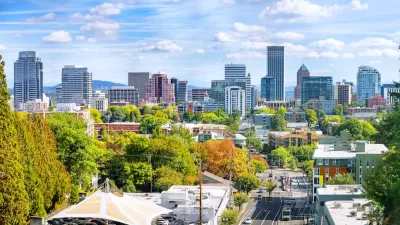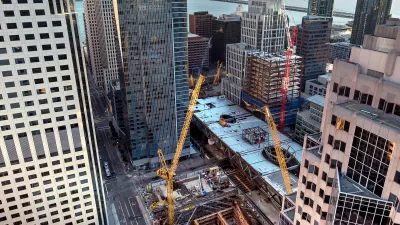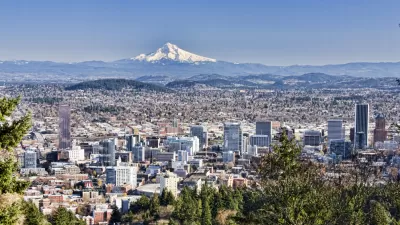An inclusionary zoning case study is emerging in Portland. Even if inclusionary zoning isn't broken, it might still need a fix, say local planners.

Apartment development has slowed after years of multi-family construction in Portland, according to an article by Eliot Njus, and some are placing blame for the changing market fundamentals on the city's inclusionary zoning policy.
…Construction costs have ballooned, as have land prices. The glut of new construction, meanwhile, has taken the wind out of rising rents, at least at the high end.
But Portland officials are increasingly worried the city’s inclusionary zoning policy, which compels developers to set aside rent-restricted units in large apartment and condo projects, might be playing a role, too. And if home construction dries up, it could ultimately push housing costs even higher.
Although its not totally clear exactly how much inclusionary zoning is responsible for the drop off in apartment construction in Portland, the city agency tasked with monitoring the program, is considering whether it's "time to consider changes that could give developers a better deal — or risk putting an artificial cap on the housing supply, driving rents higher in the long run." Njus quotes Tyler Bump, a senior economic planner with the Bureau of Planning and Sustainability, in the article. Bump also recently authored a report for the Bureau of Planning and Sustainability [pdf] that documents the slowing pace of development permitting during the period from February 2017 to February 2018. That report concludes that for the city to keep pace with the housing goals established in the city's 2035 Comprehensive Plan, the city must "explore a process to make adjustments or modifications to the Inclusionary Housing Zoning Code and Program requirements."
FULL STORY: Apartment construction is drying up. Is affordable housing measure to blame?

Planetizen Federal Action Tracker
A weekly monitor of how Trump’s orders and actions are impacting planners and planning in America.

Maui's Vacation Rental Debate Turns Ugly
Verbal attacks, misinformation campaigns and fistfights plague a high-stakes debate to convert thousands of vacation rentals into long-term housing.

San Francisco Suspends Traffic Calming Amidst Record Deaths
Citing “a challenging fiscal landscape,” the city will cease the program on the heels of 42 traffic deaths, including 24 pedestrians.

Defunct Pittsburgh Power Plant to Become Residential Tower
A decommissioned steam heat plant will be redeveloped into almost 100 affordable housing units.

Trump Prompts Restructuring of Transportation Research Board in “Unprecedented Overreach”
The TRB has eliminated more than half of its committees including those focused on climate, equity, and cities.

Amtrak Rolls Out New Orleans to Alabama “Mardi Gras” Train
The new service will operate morning and evening departures between Mobile and New Orleans.
Urban Design for Planners 1: Software Tools
This six-course series explores essential urban design concepts using open source software and equips planners with the tools they need to participate fully in the urban design process.
Planning for Universal Design
Learn the tools for implementing Universal Design in planning regulations.
Heyer Gruel & Associates PA
JM Goldson LLC
Custer County Colorado
City of Camden Redevelopment Agency
City of Astoria
Transportation Research & Education Center (TREC) at Portland State University
Jefferson Parish Government
Camden Redevelopment Agency
City of Claremont





























